Bhoga Nandeeshwara Temple – An Epitome of Splendid Grandeur
- In Travel
- 12:06 PM, May 04, 2023
- Dr T L S Bhaskar
Karnataka is known for its temples- rich in their historical account, spellbound in their architecture and the festivities people celebrate. In general, most of the well-known temples in the State are governed either by a matha/mutt or peetham with a clear line of spiritual/religious descendants. While successive lineages of various empires are given the credit for building temples with a remarkable architecture, the Hoysala Empire stands tall with their immense contribution to the construction of temples in Karnataka, with temples at Halebeedu, Belur and Somanathapura standing out as the prominent ones. There are various other temples across the State that are also widely recognized for their elegance and uniqueness. The Bhoga Nandeeshwara Temple in Nandi village of Chikkabullapur district in Karnataka is often considered one of the oldest temples in the State, more than ten centuries old, rich in tradition and grandeur in its construction.
We have recently made a visit to the Bhoga Nandeeshwara temple complex, located around 60 KM from Bengaluru. It is on the Bengaluru- Hyderabad Highway in Nandi village, en route to the well-known Nandi Hills which is a prominent tourist destination. It is maintained by the Archaeological Survey of India (ASI) for its heritage and history and is easily accessible to the public. Built in the Nolambavadi- Dravidian style, the temple complex was patronaged by many kingdoms such as the Nolamba-Pallavas, Bana, Gangas, Cholas, Hoysalas, the Vijayanagara and subsequently by the Maharajas of Mysore and local chiefs of Chikkaballapur. All these mighty kingdoms must have added to the grandeur of the temple complex over the centuries. As such the Nandi Hills is visited by a large number of tourists for its natural beauty and setting with many attractions, particularly for the sunrise. The Nandi Hills is also a popular destination for its ancient temples and other structures, which we did not try to cover in this article.
References to the presence of a temple without a direct reference to the Bhoga Nandeeshwara were made in the inscriptions that the temple received grants from the wife of Bana King Vidhyadhara. In this regard, the ASI mentions that (description at the entrance of the temple) plates found at Chikkaballapur reflect the fact that the temple was built by Ratnavali, consort of the Bana King Bana Vidhyadhara, and the record of a grant to it in CE 810. The inscriptions are from the Nolamba dynasty ruler Nolambadiraja and the Rashtrakuta emperor Govinda III dated c.806, and copper plates of the Bana rulers Jayateja and Dattiya of about c.810, making the temple nearly 1200 years old.
The present-day Bhoga Nandeeshwara Temple complex has a magnificent mahadwara that leads the visitors to various temples inside. One cannot miss the majestic wooden chariot right next to the mahadwara. The complex consists of two main Siva temples Arunachaleshwara and Bhoga Nandeeshwara (twin temples with almost identical structures and gopura) with a separate shrine of Uma Maheshwara in between the two. They are in the order of Arunachaleshwara (South), Uma Maheshwara and Bhoga Nandeeshwara (North) next to each other on the same platform, and represent the life stages of the Lord Siva.
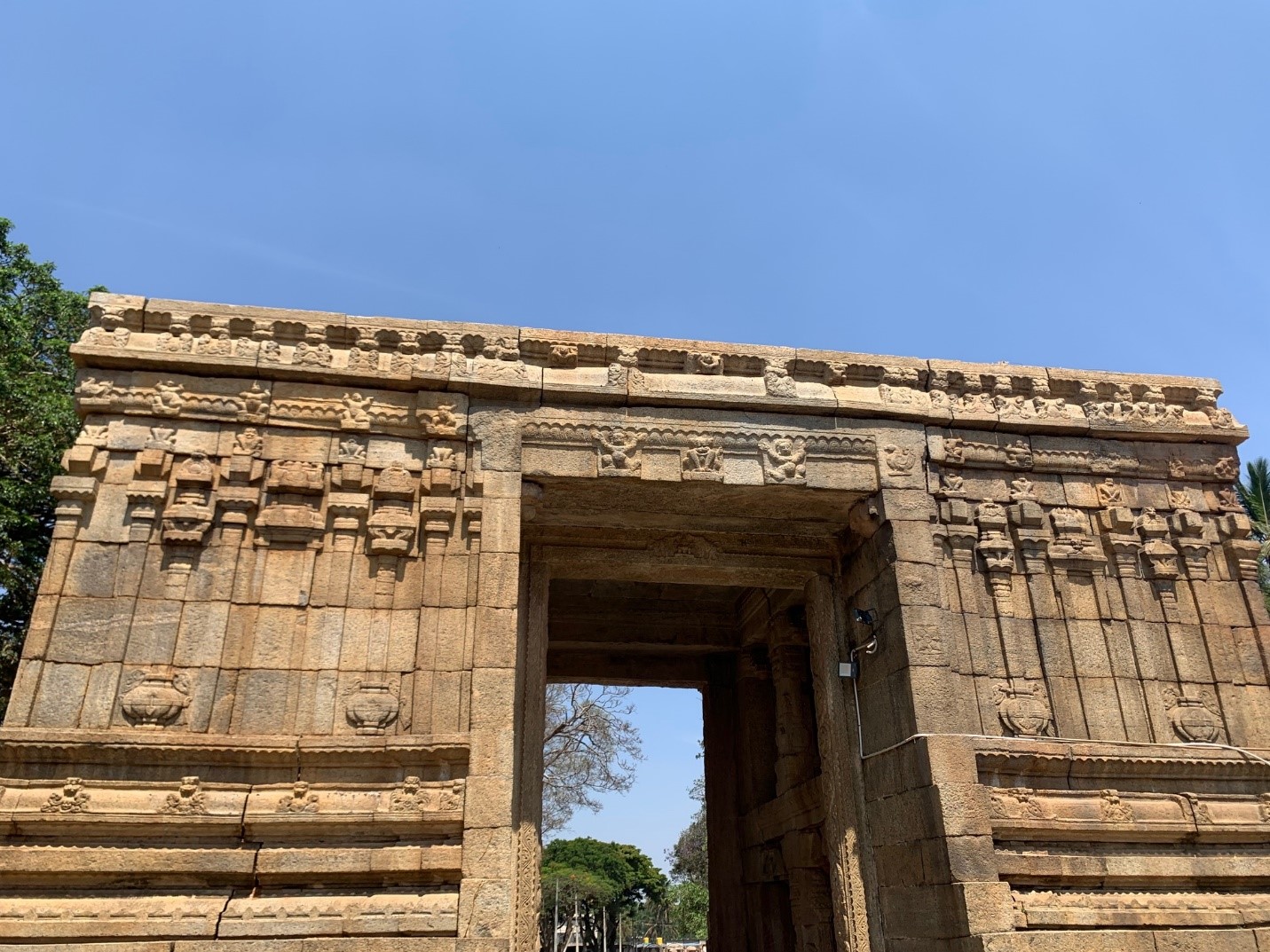
The Mahadwara (entrance) to the Bhoga Nandeeshwara Temple Complex
While the temples Arunachaleshwara and Bhoga Nandeeshwara have a dedicated entrance, prakara and gopura (vimana) each, the Uma Maheshwara shrine is in between them in a jointed manner between the two main temples. Both the main Siva temples have a navaranga - nine square areas formed by four pillars in front of the garbhagriha. The navaranga is considered unique to the Hoysala architecture. Likewise, it’s a rarity to find Siva & Uma (Parvati) carved in one stone as a couple, and one can see them as a couple in this temple complex as Uma Maheshwara. The four-pillared kalyana mandapa in front of the Uma Maheshwara idol, which is plated with gold, is one of the most breathtaking artworks on black soapstone that one cannot miss to admire. One must definitely see the carvings on the backside of the wall that joins both the main Siva temples to appreciate the artwork.
Of the twin temples, the first one, the Arunachaleshwara Temple was built by the Gangas of Talakad. The Linga here reminds the devotees of the well-known Arunachaleshwara in Tiruvannamalai which was built by Cholas. As a matter of fact, to the readers, the Arunachaleshwara in Tiruvannamalai represents the Agni (Fire) Linga amongst the panchabhoota (five elements) linga. The second one, the Bhoga Nandeeshwara temple was built by the Cholas. The contribution of Cholas is reflected by the presence of the bust of Rajendra-I, inside the Bhoga Nandeeshwara temple, and visitors can see it placed on the left side before entering the garba griha. Both the Arunachaleshwara and the Bhoga Nandeeshwara temples have Lord Ganesha (Vinayaka) just outside the garba griha along with Nandi facing the Siva Linga. Both temples have majestic Shiva lingams, prominently visible from a distance, exuberant and divine, showering happiness, prosperity and blessings to the devotees. The Ganesha in Arunachaleshwara temple is worshipped as Simha Ganapathi.
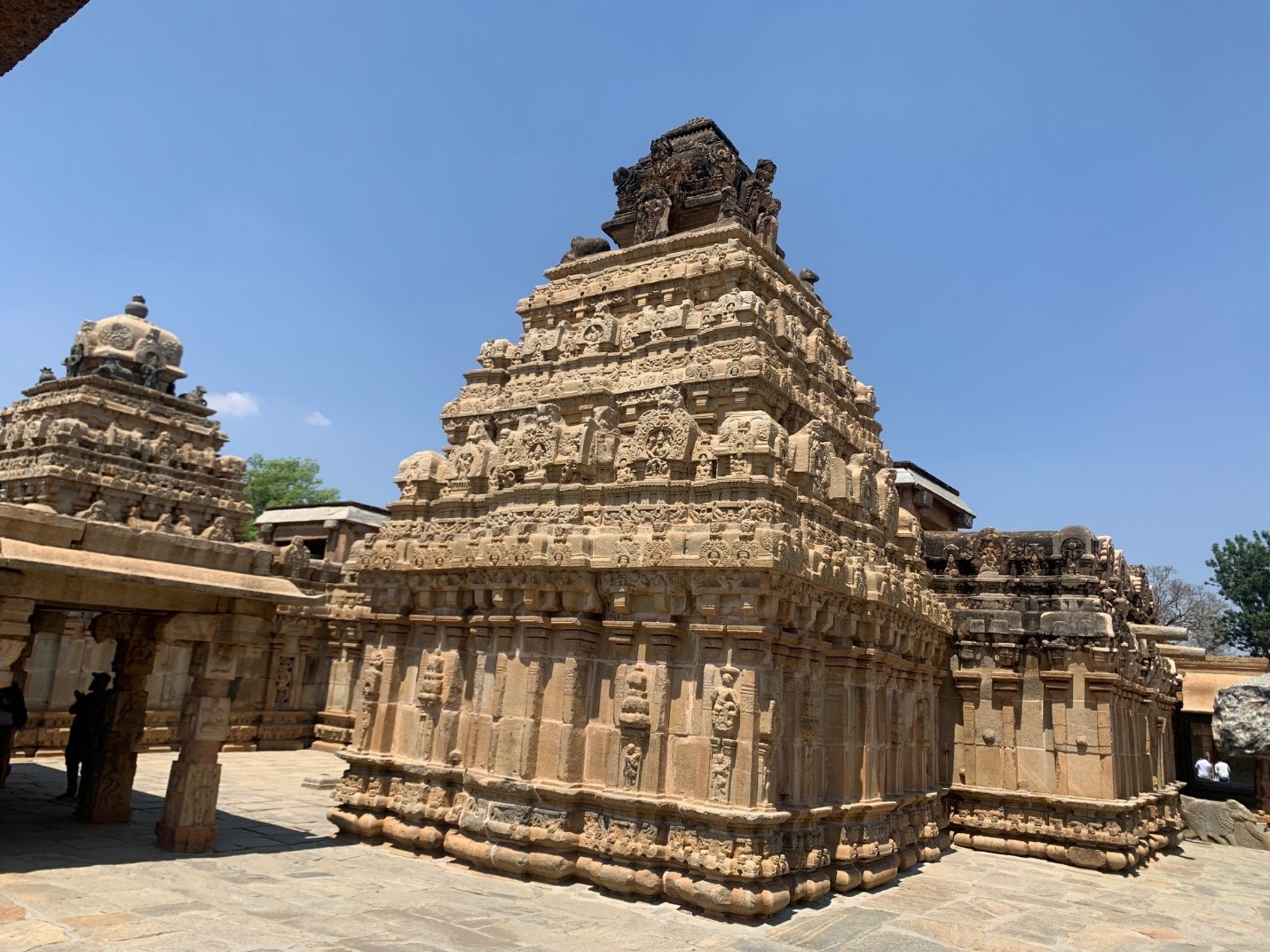
Gopura of the Twin Temples of Arunachaleshwara and Bhoga Nandeeshwara
Walking through the temple and its structures, one is reminded of several historical places in Karnataka. The Mandapa in front of the Uma Maheshwara idol reminds one of the ornated carvings on pillars as seen in Beluru and Halebeedu temples, other ornated carvings on the pillars and the sculptures are a reflection of those seen in Hampi, Pattadikal and Aihole, and the gopura (vimana) is a reflection of the temples built by the Cholas. In a way, since the whole temple complex has seen patronage of several kingdoms from around 800-1500 AD, various forms of Dravidian & Hoysala architecture can clearly be seen in the complex.
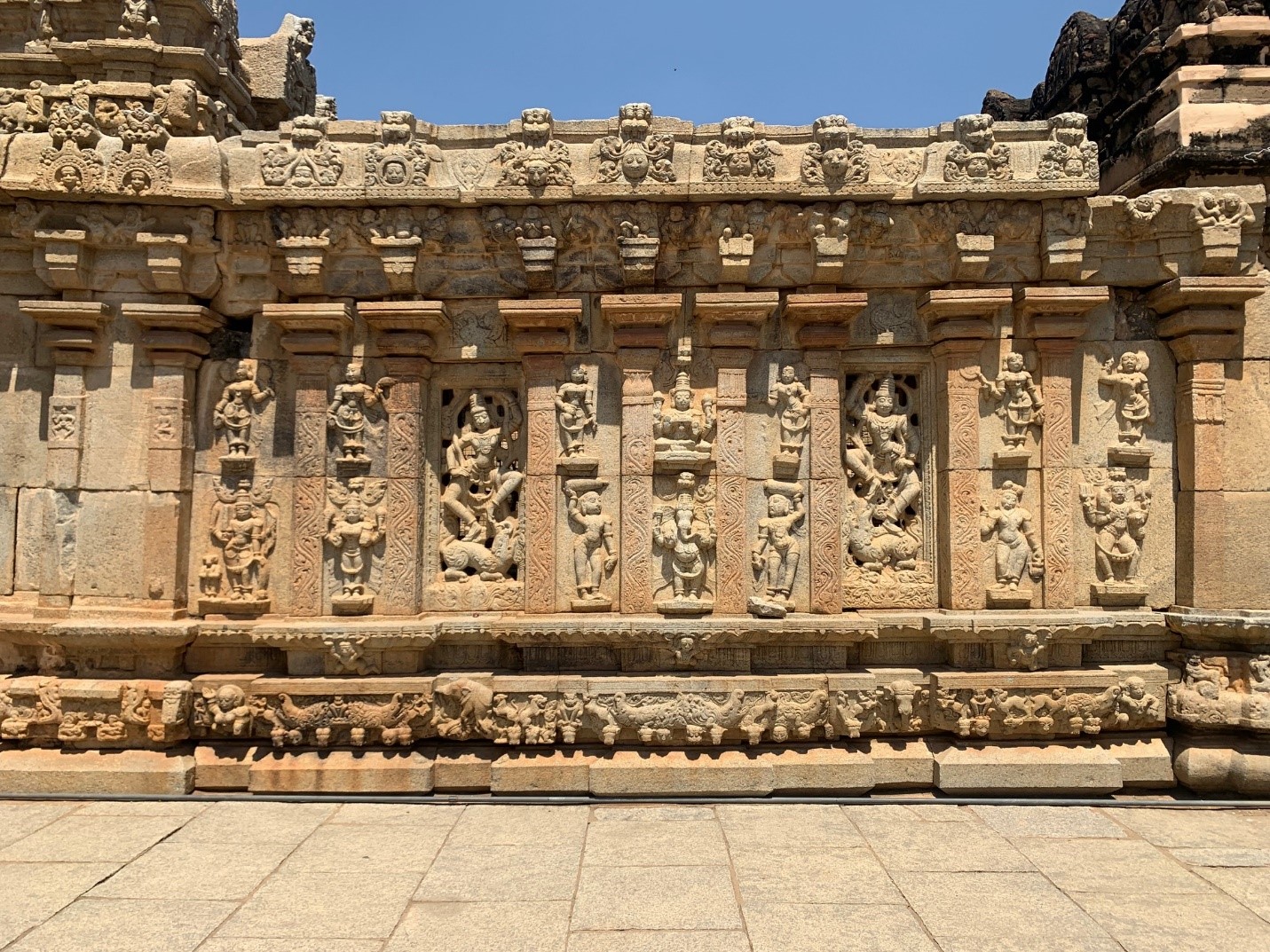
Sculptures behind the Uma Maheshwara Temple
There are many other smaller temples also within the compound with the prominent being dedicated to Kamatheshwara, goddesses Girijamba and Apita Kuchamba, and the Naga Devata (serpent deities that are prominently worshipped in the south, including Adi Sesha). Yet another prominent feature is the carving of the Mahishasura Mardini statue on the northern wall of Bhoga Nandeeshwara temple, diagonally opposite to the Naga Devata (serpent deities) statutes. The temple in fact has carvings representing Saivism, Vaishnavism, Shakti, and other Vedic deities beautifully represented on the walls and pillars.
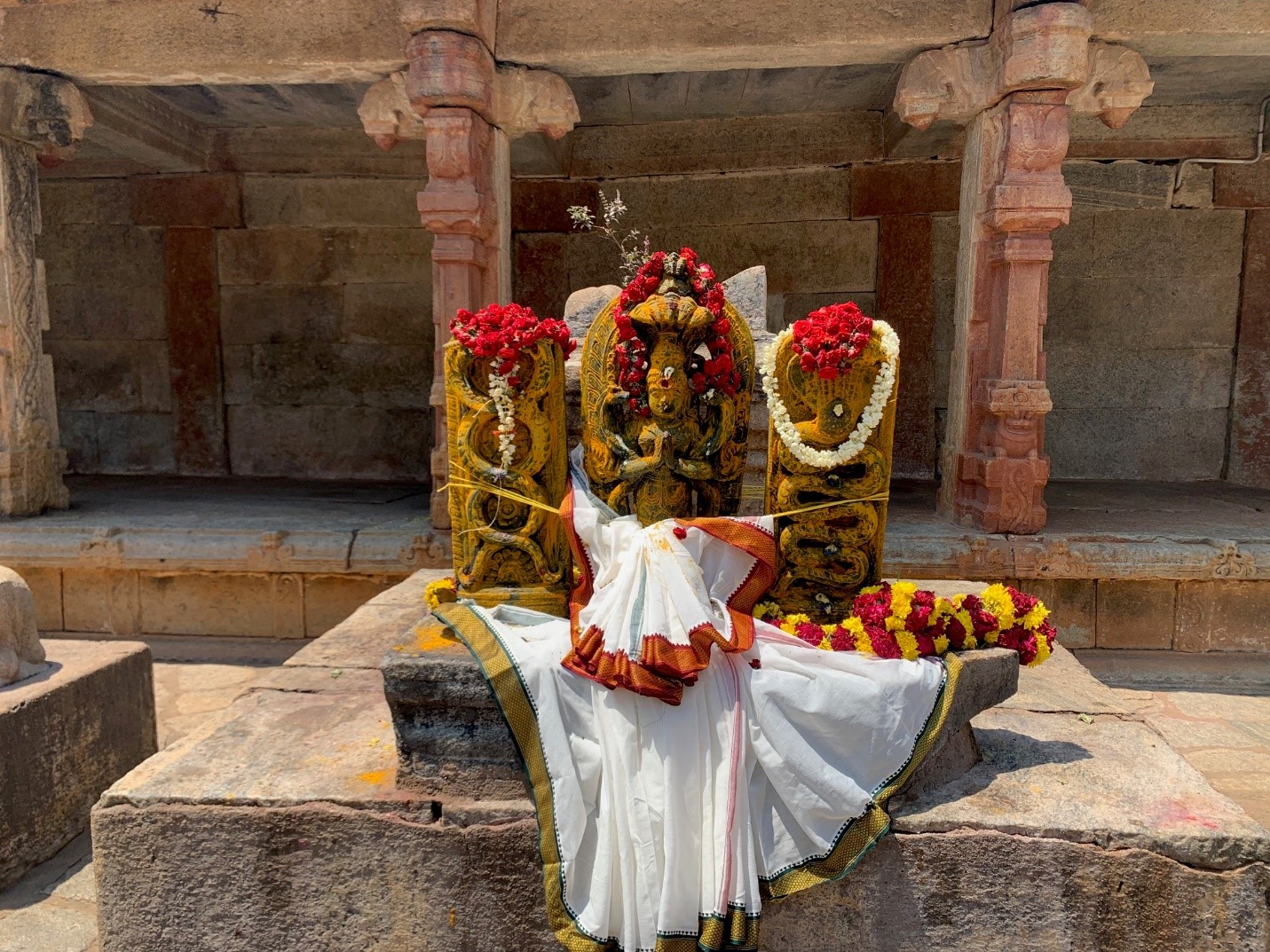
The Naga Devatas
The temple complex is also believed to be built surrounded by hills that are known for the origins of five rivers, namely, Swarnamukhi, Palar, Akravathy, Pinakini and Papagni. Shringi teertha, the temple’s pushkarini (pond) is a 19-step pond with built in an inverted pyramid style and is an attraction to the devotees. This teertha is considered a source for the river South Pinakini and was built by the Vijayanagara Emperor, Sri Krishna Devaraya. The complex is also known for various mandapas built during different periods, prominent among them include the Vasanta mandapa, Kalyana mandapa, Thulabhara mandapa, and Nandi mandapas. Other important attractions include expansive lawns on either side from the main entrance, the famous pipal tree and other temples outside the mukhadwara (entrance of the temple).
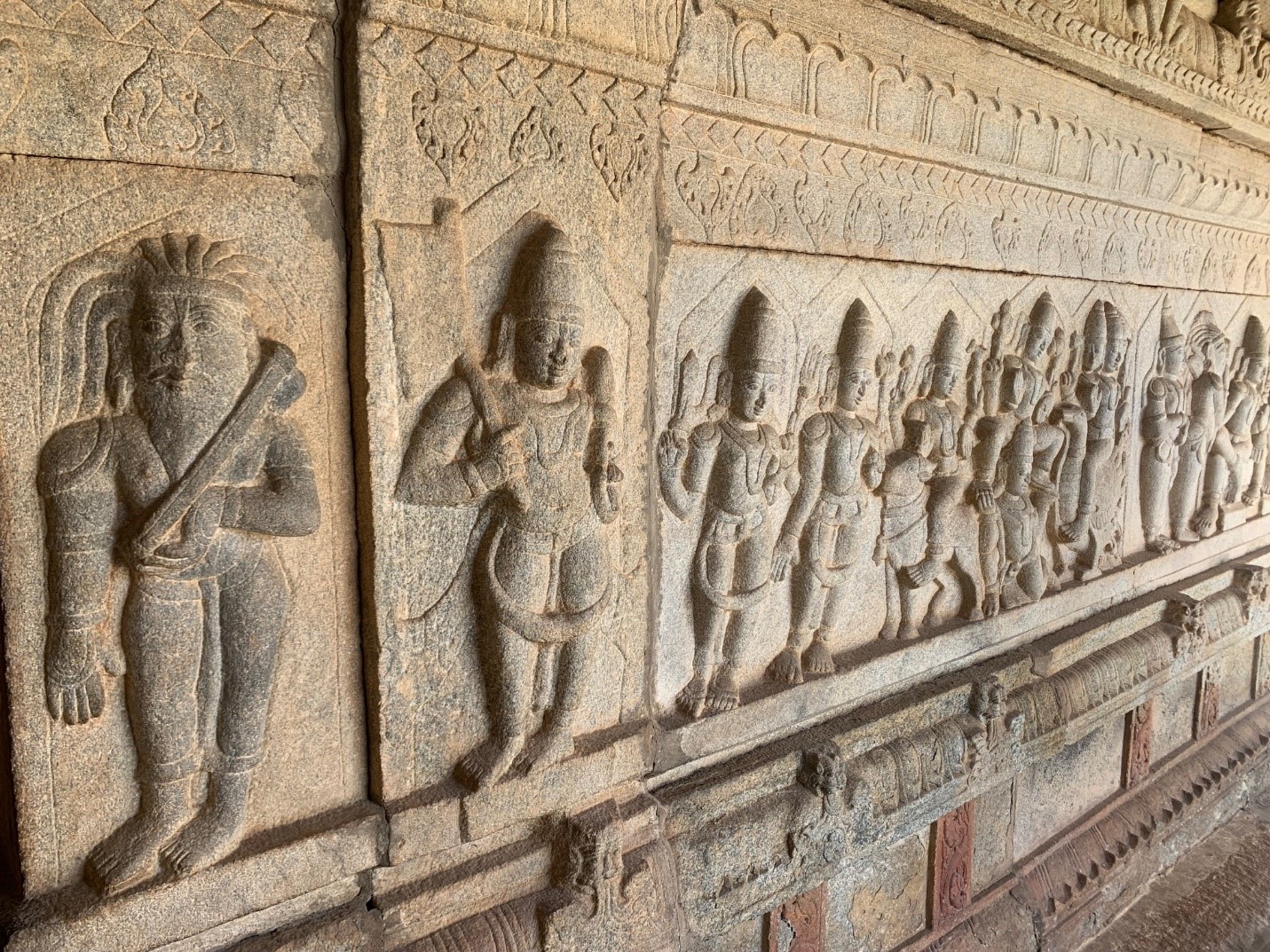
Sculptures on the walls of Apita Kuchamba Temple
Apart from the devotional aspects of the temple, the temple also conducts marriage ceremonies as Uma and Maheshwara (Parvati & Siva) appear as a couple and bless the pilgrims. Devotees must definitely try the mid-day prasada (meals) provided by the management. As a matter of convenience, the temple complex has neatly maintained restrooms and drinking water facilities for the devotees.
All the images are provided by the author.



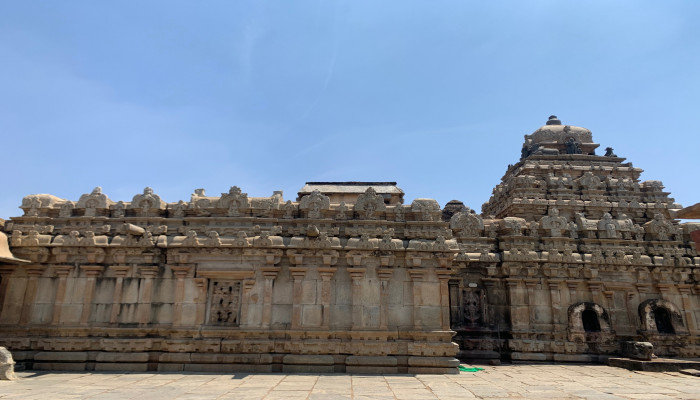



Comments